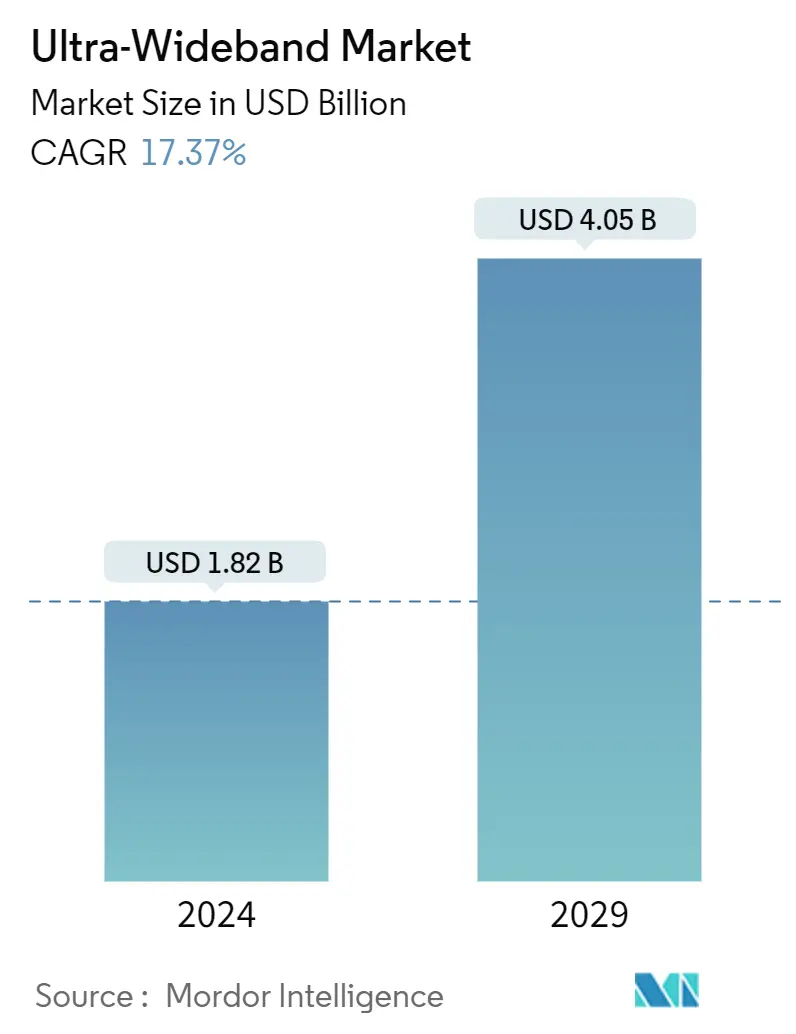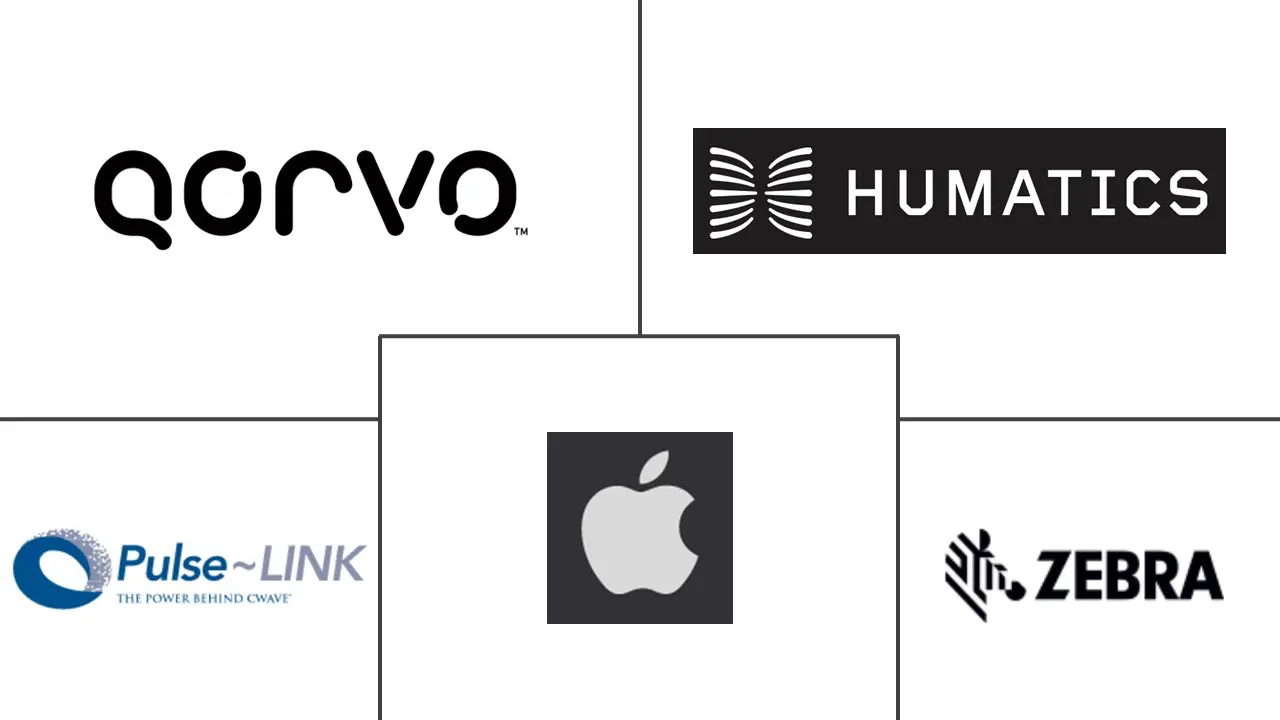Market Size of Ultra-Wideband Industry

| Study Period | 2019 - 2029 |
| Market Size (2024) | USD 1.82 Billion |
| Market Size (2029) | USD 4.05 Billion |
| CAGR (2024 - 2029) | 17.37 % |
| Fastest Growing Market | Asia-Pacific |
| Largest Market | Asia-Pacific |
Major Players
*Disclaimer: Major Players sorted in no particular order |
Need a report that reflects how COVID-19 has impacted this market and its growth?
Ultra Wideband (UWB) Market Analysis
The Ultra-Wideband Market size is estimated at USD 1.82 billion in 2024, and is expected to reach USD 4.05 billion by 2029, growing at a CAGR of 17.37% during the forecast period (2024-2029).
The increasing popularity and penetration of consumer electronic devices, such as mobile phones and smartphones, drive the market's growth. The ongoing advancements in new applications of UWB technology in wireless sensor networks directly impact the market's growth.
- The demand for the Industrial Internet of Things (IIoT), which is increasing, is a big reason why the ultra-wideband market is growing. IIoT uses smart sensors to improve manufacturing and other industrial applications. Reducing labor and enabling industries to automate processes increases the efficiency of industrial operations. The demand for UWB technology in the real-time location system (RTLS) increased significantly due to its various applications.
- Increasing urbanization, modernization, and globalization are driving the market's growth. Growing industrial infrastructure, technological advancements to improve the operation of semiconductor tools, and increasing digitization in the healthcare and retail sectors across the world are other factors driving the market's growth. New applications of UWB technology are also expected to boost the market's growth.
- Because UWB technology is more accurate than Wi-Fi and RFID, many industries that use RTLS have switched from Wi-Fi and RFID to UWB technology to increase efficiency, shorten lead times, and lower costs. These things also boosted the demand for ultra-wideband technology, driving the market over the next few years.
- The UWB market is getting stiff competition from substitute products such as Bluetooth, GPS, and Wi-Fi. UWB is better than Bluetooth and Wi-Fi in many ways, such as high security, low power, high bandwidth, two-way communication, etc., making it useful for many applications. However, UWB may be used less by end-user industries because it is more expensive than alternatives.
- Ultra-wideband is a wireless technology that can measure a device's location to within a few centimeters inside and outside. This makes it possible to track a device's position and distance in real-time with more accuracy than ever before. Applications for COVID-19 contact tracing and social distancing were made in many different countries to stop the pandemic from spreading further. This created an opportunity for UWB-based devices during the pandemic because of their accuracy, making them a good fit for these apps.
